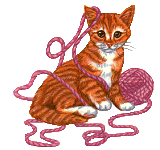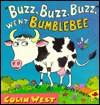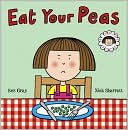Animals Storytime Handout animalhandvocabcarolwagstaffdouglascolplby Carol Wagstaff, Douglas County (CO) Public Library
Zoo Storytime Handout
Zippety Zoo Storytime Handout yadkinnchandoutzippetyzoo by Lynne Reed, Yadkin County (NC) Public Library
Junglemania Storytime Handout
Junglemania Storytime Handout: yadkinnchandoutJunglemania by Lynne Reed, Yadkin County (NC) Public Library
Eensy Weensy Spider Interactive between Adult and Child--Video Clip
Video clip demonstration of making a rhyme, Eensy Weensy Spider, interactive between adult and children.
Click here
Saroj Ghoting, Early Childhood Literacy Consultant
Hickory Dickory Dock with Handout
You can use the figures on the handout as a pattern to make a flannel board. Then use the flannel board as another way to share the rhyme and to play a game.
Introduction: Let's say the rhyme Hickory Dickory Dock Hickory dickory dock The mouse ran up the clock The clock struck one, the mouse ran down. Hickory dickory dock. Repeat using struck two . . . the mouse said "Boo." struck three . . . the mouse said "Whee." struck four . . . the mouse said "No more!" Great! Now let's play a little game on the flannel board. I am going to put the mouse somewhere near the clock and you see if you can tell me where. [Put the mouse on top of the clock.] Where is the mouse? Right! On top of the clock. Repeat with behind, underneath, below, beside or next to, etc.
Early Literacy Aside--Example: When we use words that describe position, you are helping your children understand what the words mean. This will later help them understand what they read. Early Literacy Aside--Empower: Adults, I have a handout here with illustrations for Hickory Dickory Dock. In addition to saying the rhyme together with your children, you can cut out the figures and put the figures in different positions to help your children learn new words and build their vocabulary. Enjoy!
Jack and Jill Rhyme and Song
Nursery Rhyme: Jack and Jill
Jack and Jill went up the hill
To fetch a pail of water
Jack fell down
And broke his crown
And Jill came tumbling after.
Preparation: Have the words to the rhyme up on a chart. Have the group say, not sing, the words. Then have the group sing the rhyme. Ask the adults what differences they noticed when singing it vs. saying it.
Early Literacy Aside--Example: Singing slows down language so that children can hear the smaller sounds in words. This helps children later to sound out the words when they learn to read.
Videoclip of Hickory Dickory Dock--Interaction
Videoclip of making Hickory Dickory Dock more interactive between adults and children.In order to keep adults as well as children involved in storytime, it is good to have some storytime items interactive between the adults and the children. This encourages language interactions between them. We can encourage them to continue this kind of interaction even after storytime is over.
Scarecrow, Scarecrow Rhyme and Dance
 Early Literacy Aside--Explain: Here's a rhyme that you can do anytime and it reinforces rhyming words which develops phonological awareness while having fun at the same time.Do Scarecrow, Scarecrow activity
Children stand up with arms bent at elbows like a scarecrow and head tilted. Actions to words.
Scarecrow, Scarecrow, turn around
Scarecrow, Scarecrow, jump up and down
Scarecrow, Scarecrow, raise your arms high
Scarecrow, Scarecrow, wink one eye
Scarecrow, Scarecrow, bend your knees
Scarecrow, Scarecrow, flap in the breeze
Scarecrow, Scarecrow, climb into bed
Scarecrow, Scarecrow, rest your head.
Early Literacy Aside--Explain: Here's a rhyme that you can do anytime and it reinforces rhyming words which develops phonological awareness while having fun at the same time.Do Scarecrow, Scarecrow activity
Children stand up with arms bent at elbows like a scarecrow and head tilted. Actions to words.
Scarecrow, Scarecrow, turn around
Scarecrow, Scarecrow, jump up and down
Scarecrow, Scarecrow, raise your arms high
Scarecrow, Scarecrow, wink one eye
Scarecrow, Scarecrow, bend your knees
Scarecrow, Scarecrow, flap in the breeze
Scarecrow, Scarecrow, climb into bed
Scarecrow, Scarecrow, rest your head.
Submitted by Terri Stringer, Vandalia Branch, Dayton Metro (OH) Public Library
Itsy Bitsy Spider Rhyme
 Early Literacy Aside--Explain: Talking with children as you read books and share rhymes can add to the words they know and to their knowledge if YOU use words they are not familiar with or add information they may not yet know. Both adding to their vocabulary and to their knowledge will help them understand what they read when they learn to read. Say/sing the rhyme with actions:
The itsy bitsy spider went up the waterspout.
Down came the rain and washed the spider out.
Out came the sun and dried up all the rain.
And the itsy bitsy spider climbed up the spout again.
Early Literacy Aside--Example: Here are some examples of the kinds of questions you can ask your children. Then add to what they say to introduce new words and information. [Then you ask the children a couple of questions. Some possibilities are below. Be careful to keep it fun and engaging, not like a test of knowledge.]
Where was the spider going?
What happened when the rain started?
Where do you think spiders live?
Have you seen a spider? Where? What was it doing?
What do you know about spiders?
Early Literacy Aside--Empower: Sometimes we do not know much about some of the topics our children are interested in. We have lots of factual books on a variety of topics like spiders, snakes, dinosaurs, trains, and more. Just let us know what you and your children would like to read about. These books not only make reading enjoyable because yuou are building on your child's interest, you are also setting a good foundation for helping them learn new words and knowledge.
Early Literacy Aside--Explain: Talking with children as you read books and share rhymes can add to the words they know and to their knowledge if YOU use words they are not familiar with or add information they may not yet know. Both adding to their vocabulary and to their knowledge will help them understand what they read when they learn to read. Say/sing the rhyme with actions:
The itsy bitsy spider went up the waterspout.
Down came the rain and washed the spider out.
Out came the sun and dried up all the rain.
And the itsy bitsy spider climbed up the spout again.
Early Literacy Aside--Example: Here are some examples of the kinds of questions you can ask your children. Then add to what they say to introduce new words and information. [Then you ask the children a couple of questions. Some possibilities are below. Be careful to keep it fun and engaging, not like a test of knowledge.]
Where was the spider going?
What happened when the rain started?
Where do you think spiders live?
Have you seen a spider? Where? What was it doing?
What do you know about spiders?
Early Literacy Aside--Empower: Sometimes we do not know much about some of the topics our children are interested in. We have lots of factual books on a variety of topics like spiders, snakes, dinosaurs, trains, and more. Just let us know what you and your children would like to read about. These books not only make reading enjoyable because yuou are building on your child's interest, you are also setting a good foundation for helping them learn new words and knowledge.
Submitted by a library staff person at Public Library of Charlotte and Mechlenburg County (NC)
Five Candles
Five CandlesFive candles on a birthday cake
Five, and not one more.
You may blow one candle out, [make blowing sound and motion]
And that leaves four!
Four candles on a birthday cake There for all to see.
You may blow one candle out, [make blowing sound and motion]
And that makes three!
Three candles on a birthday cake
Standing straight and true.
You may blow one candle out, [make blowing sound and motion]
And that leaves two!
Two candles on a birthday cake
Helping us have fun.
You may blow one candle out, [make blowing sound and motion]
And that leaves one!
One candle on a birthday cake
We know its task is done.
You may blow this candle out, [make blowing sound and motion]
And that leaves none!
Early Literacy Aside--Example: Rhyming words are an important step in early literacy. They will help your children distinguish words in the same family with the same vowel and ending sounds. This will help your children when they learn to sound out words to read.
There for all to see.
You may blow one candle out, [make blowing sound and motion]
And that makes three!
Three candles on a birthday cake
Standing straight and true.
You may blow one candle out, [make blowing sound and motion]
And that leaves two!
Two candles on a birthday cake
Helping us have fun.
You may blow one candle out, [make blowing sound and motion]
And that leaves one!
One candle on a birthday cake
We know its task is done.
You may blow this candle out, [make blowing sound and motion]
And that leaves none!
Early Literacy Aside--Example: Rhyming words are an important step in early literacy. They will help your children distinguish words in the same family with the same vowel and ending sounds. This will help your children when they learn to sound out words to read.
Five Little Kittens Rhyme
Say the rhyme together. Act out the lyrics.Five Little Kittens
Five little kittens sleeping on a chair
One rolled off, leaving four there.
Four little kittens, one climbed a tree To look in a birds nest; then there were three.
Three little kittens wondered what to do.
One saw a mouse, and then there were two.
Two little kittens playing near a wall.
One little kitten chased a red ball.
One little kitten with fur soft as silk,
Left all alone to drink a dish of milk.
To look in a birds nest; then there were three.
Three little kittens wondered what to do.
One saw a mouse, and then there were two.
Two little kittens playing near a wall.
One little kitten chased a red ball.
One little kitten with fur soft as silk,
Left all alone to drink a dish of milk.
Early Literacy Aside--Example: We are acting out the lyrics. After we do it a few times, I will see if the children can help me recall the actions and say the rhyme themselves. This is a form of narrative skills, saying the rhyme in order and using the actions to help them recall it, a first step in later understanding what they read.
Submitted by Anna Hancock, Cincinnati (OH) Public Library
Ten Little Campers Fingerplay
Fingerplay: Ten Little CampersTen little campers putting up their tent. (Put finger tips of fingers together forming tent roof)
Ten little campers close the vents. (Intertwine fingers together to signify closure)
Submitted by Beth Grai, Independence (MI) Township Library
Any Rhyming Song
Early Literacy Aside--Explain: Rhyming is one of the things that children learn that lets them hear that words are made of smaller parts. By doing rhyming songs and fingerplays with your child, you are supporting phonlogical awareness. It's fun for you and your child and will help them when it comes time for them to sound out words when they learn to read. Submitted by Molly Beedon, Ypsilanti (MI) District Library
Candlewick Press Storytime Plan
Storytime Plan includes these books with suggested activities and relation to the early literacy skills.Arabella Miller's Tiny Caterpiller by Clare Jarrett On the Farm by David Elliott A Visitor for Bear by Bonny Becker Tweedle Dee Dee by Charlotte Voake [Some activities are more for school-age children.] readtousstoryhourkit.pdf
Little Raindrops Fingerplay
Fingerplay: Little Raindrops
This is the sun, high up in the sky. (Form large circle with arms up)
A dark cloud suddenly comes sailing by. (Move hands through the air in a parallel motion.)
These are the raindrops, pitter, pattering down. (Bring arms down, flutter fingers)
Watering the flowers, growing on the ground. (Cup hands to form flowers.)
Activity: Make a book based on this fingerplay. Use the pattern here (Little Raindrops Booklet pattern) to represent the items in the fingerplay. There are four pages for your book (one for each line of the fingerplay). The pattern is a Word document so you can change the size of the objects to save paper, if you wish. The children cut out the pictures. They can cut around them to make it easier. The adults write the words to the fingerplay on each page. For children too young for this craft, the adults make the book FOR their young children. The umbrella can be used on the cover of the book.
Early Literacy Aside--Empower: Making a book with or for your child is very special. By showing care in making them and including your child in the process you make this activity around a book enjoyable. Your child can memorize the words to the rhyme and can "pretend" read it to you. Praise your child. This helps develop print motivation, a child's interest and enjoyment of books and reading. OR Making a book with your child shows them how books work. This helps them with print awareness, how to handle a book, which will get them comfortable with using books as they learn to read. Submitted by Jaime Duval and Whitney Whitaker, Radford (VA) Public Library
Buzz, Buzz, Buzz! Went Bumblebee by Colin West
 Early Literacy Aside--Explain: Narrative skills can be developed by having your children tell stories. This is easier for some children when they recognize patterns so that they can predict what will happen next.Early Literacy Aside--Example: As we read the book we want to encourage our children to recognize the pattern and to repeat "buzz, buzz, buzz" and "buzz off."
Read Buzz, Buzz, Buzz! Went Bumble-bee by Colin West
Fingerplay: Here is the Beehive
Here is the beehive. Where are the bees? (Hold up fist.)
Hidden away where nobody sees. (Move other hand around fist.)
Watch and you see them come out of the hive. (Bend head close to fist.)
One, two, three, four, five. (Hold fingers up one at a time.)
Bzzzzzzzz all fly away! (Wave fingers.)
Early Literacy Aside--Empower: Children enjoy repeating phrases as they did in our book and song. Please help your children look for patterns in the books and songs you do at home. This helps foster your children's narrative skills which will later help them understand how stories work and will help them understand what they read.
Early Literacy Aside--Explain: Narrative skills can be developed by having your children tell stories. This is easier for some children when they recognize patterns so that they can predict what will happen next.Early Literacy Aside--Example: As we read the book we want to encourage our children to recognize the pattern and to repeat "buzz, buzz, buzz" and "buzz off."
Read Buzz, Buzz, Buzz! Went Bumble-bee by Colin West
Fingerplay: Here is the Beehive
Here is the beehive. Where are the bees? (Hold up fist.)
Hidden away where nobody sees. (Move other hand around fist.)
Watch and you see them come out of the hive. (Bend head close to fist.)
One, two, three, four, five. (Hold fingers up one at a time.)
Bzzzzzzzz all fly away! (Wave fingers.)
Early Literacy Aside--Empower: Children enjoy repeating phrases as they did in our book and song. Please help your children look for patterns in the books and songs you do at home. This helps foster your children's narrative skills which will later help them understand how stories work and will help them understand what they read.
Eat Your Peas by Kes Gray
Click below for a storytime plan including the book Eat Your Peas by Kes Gray and highlighting print motivation.

peaspeaspeas1.doc Submitted by participants of Saskatchewan Library Association Conference 2008
Nursery Rhymes
 Early Literacy Aside--Empower: Rhymes help teach "phonological awareness," an awareness of the sounds that make up words. You may have noticed that your child enjoys the way a nursery rhyme sounds even if it doesn't make much sense to him. When you introduce a new rhyme or song, repeat it at least twice. Three times is even better. And be sure to keep repeating the old, familiar rhymes too.
Submitted by Cindy Christin, Bozeman (MT) Public Library
Early Literacy Aside--Empower: Rhymes help teach "phonological awareness," an awareness of the sounds that make up words. You may have noticed that your child enjoys the way a nursery rhyme sounds even if it doesn't make much sense to him. When you introduce a new rhyme or song, repeat it at least twice. Three times is even better. And be sure to keep repeating the old, familiar rhymes too.
Submitted by Cindy Christin, Bozeman (MT) Public Library
Making Gingerbread Fingerplay
 Fingerplay:Stir a bowl of gingerbread (pretend to stir)
Smooth and spicy brown
Roll it with a rolling pin (pretend to roll dough)
Up and up and down
With a cookie cutter (imitate)
Make some little men
Put them in the oven (imitate)
'Til half past ten! (pretend to look at watch)
Early Literacy Aside--Example: Rhyming is one way that children learn to hear the smaller parts of words, also called phonological awareness. Talking about the words that rhyme as you say rhymes with your children will better prepare them to read when they begin to sound out words in school. Adding motions makes it more fun!
Fingerplay:Stir a bowl of gingerbread (pretend to stir)
Smooth and spicy brown
Roll it with a rolling pin (pretend to roll dough)
Up and up and down
With a cookie cutter (imitate)
Make some little men
Put them in the oven (imitate)
'Til half past ten! (pretend to look at watch)
Early Literacy Aside--Example: Rhyming is one way that children learn to hear the smaller parts of words, also called phonological awareness. Talking about the words that rhyme as you say rhymes with your children will better prepare them to read when they begin to sound out words in school. Adding motions makes it more fun!
Submitted by Amy Cook, Henrico County (VA) Public Library--Tucahoe Area Library
Hickory Dickory Dock or Any Nursery Rhyme
 Early Literacy Aside--Empower: Nursery rhymes are important to do with your children, not only here in storytime, but at home as well. The rhyming and repetition of words helps your child develop the awareness of different word sounds. This helps develop their phonological awareness which is important for later sounding out words. Also, nursery rhymes are fun to sing and act out!
Submitted by Michelle Edwards, Gloucester Library (VA)
Early Literacy Aside--Empower: Nursery rhymes are important to do with your children, not only here in storytime, but at home as well. The rhyming and repetition of words helps your child develop the awareness of different word sounds. This helps develop their phonological awareness which is important for later sounding out words. Also, nursery rhymes are fun to sing and act out!
Submitted by Michelle Edwards, Gloucester Library (VA)
